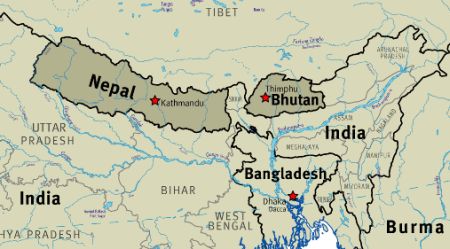We’ve reported previously on the high suicide rate in the Bhutanese population in the US, but to be honest, they killed themselves in camps at about the same high rate (or so this researcher says) as here in America.
Nevertheless, this latest news on the statistic highlights the refugees’ lack of employment in the US as one factor.

So, let’s get this straight, Islamist Grover Norquist has joined forces with the likes of the Hebrew Immigrant Aid Society (and the rest of the federal contractors, it’s just that HIAS has been the most in the news on amnesty) to push for more legal immigrant labor.
I’ve said on many previous occasions that the US State Department and federal contractors are really headhunters for the meatpacker and hotel industry among others (disguised as humanitarians)!
Amnesty for illegal aliens and increased immigrant worker visas is being largely driven by big business interests in need of plentiful cheap labor ably represented by Norquist.
So if we need more immigrant labor—why are refugees unemployed?
From Ekantapur.com (emphasis mine):
There have been 16 cases of suicide among Bhutanese refugees residing in the US as of February 2012, according to a report.
The report commissioned by the federal Office of Refugee Resettlement (ORR) has shown an increasing rate of suicide among the refugees. It noted that the Bhutanese resettlement process coincided with the global financial recession, ‘making the typical refugee problem of unemployment especially bad.’
The global suicide rate per 100,000 people—how suicide rates are calculated—is 16, and the rate for the general US population is 12.4, says the report.
The Bhutanese suicide rate is much higher—20.3 among US-resettled ones and 20.7 in the refugee camp population in Nepal.
[….]
The rate of depression among the Bhutanese refugees surveyed was 21 percent, nearly three times that of the general US population (6.7 percent). In addition to depression, risk factors for suicide included not being the family’s provider, feelings of limited social support, and having family conflict after resettlement.
Post-migration difficulties that the victims faced offer clues about their possible motivations, Preiss wrote.
Most are unable to communicate with their host communities, while many were also plagued by worries about the family back home and the difficulty of maintaining cultural and religious traditions, she added.“Most of the victims were unemployed, while a few had previous mental health diagnoses and mental health conditions were probably significantly under-diagnosed in the camps where medical care was basic at best.”
Iraqis want stuff, we want jobs!
“Money, money, money,” Som Nath Subedi offers as an explanation, according to Preiss’ article. Subedi, a Bhutanese case manager in Portland, Oregon and one of the first community leaders to highlight the suicide s, says the intense poverty of the Bhutanese refugee population may be a factor. “Iraqis, when they get here, they start looking for a house or a car,” he says.
“We start looking for a job, how to pay rent, how to get bills paid,” Preiss quoted Subedi as saying.
The solution is—more immigrant laborers?
A brief history of how we came to get 60,000 plus, largely Hindu refugees from Nepal
The King of Bhutan wanted Bhutan for his own people. The refugees we call Bhutanese are really Nepalese people who for generations had migrated into Bhutan. They were then pushed out of Bhutan by the Bhutanese government and back to Nepal and put in UN refugee camps where they were cared-for for twenty plus years. In 2007, the State Department and the UN began scattering them around the world inspite of the fact that many had to be strong-armed to give up their cultural roots.
You might liken this to the situation with the Palestinians where we in the West have paid billions of dollars to keep the Palestinians right there in camps for more than 50 years! But, for some still unknown reason no significant pressure was put on Bhutan or Nepal (countries that we should have some financial power over) to take these people in.
So, in 2007, then Bush Asst. Secretary for Population, Refugees and Migration Ellen Sauerbrey opened the door for us to take 60,000 from camps and spread them around the US. We have now exceeded 60,000 and are on our way to 70,000.
For our whole archive on Bhutanese refugees go here. In addition to the suicide problem, the Bhutanese have been victims of crimes and the most egregious one of late was the death of a Bhutanese refugee at the hands of abortion doctor Kermit Gosnell, here.
